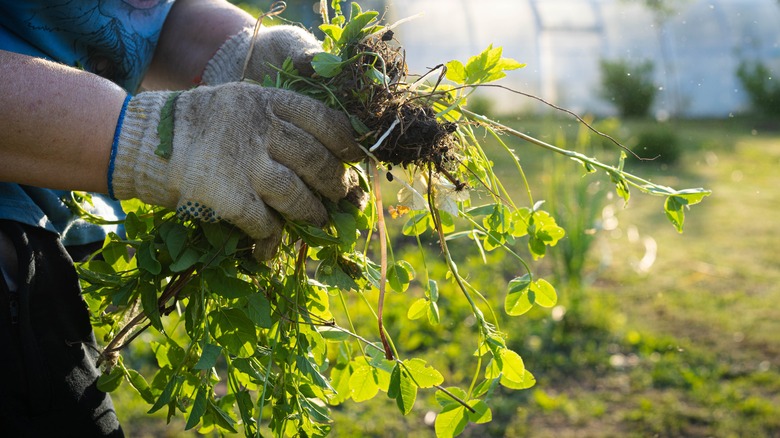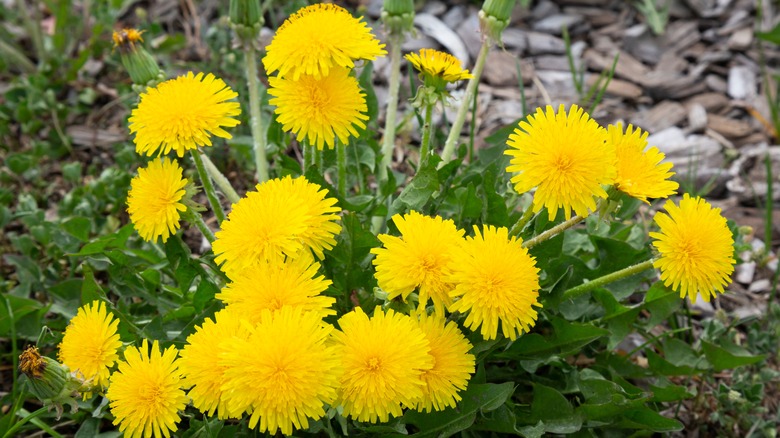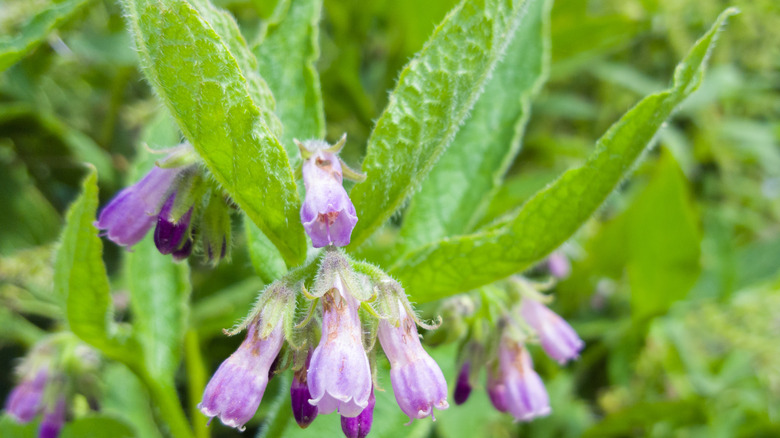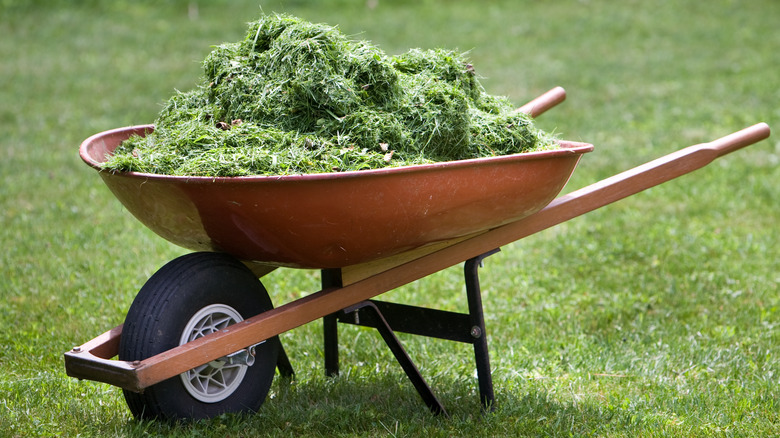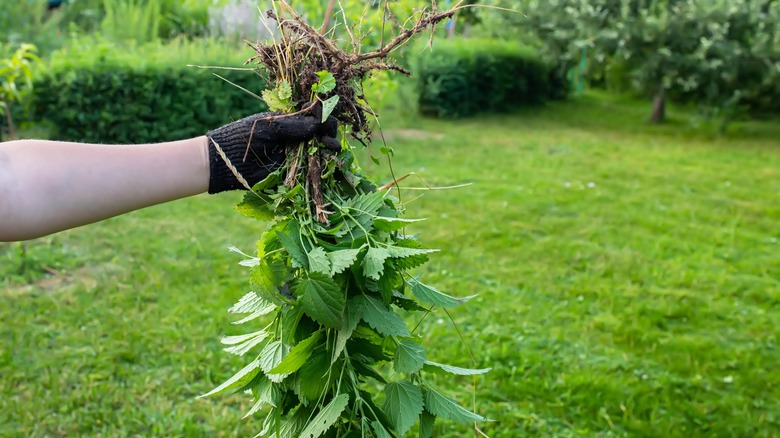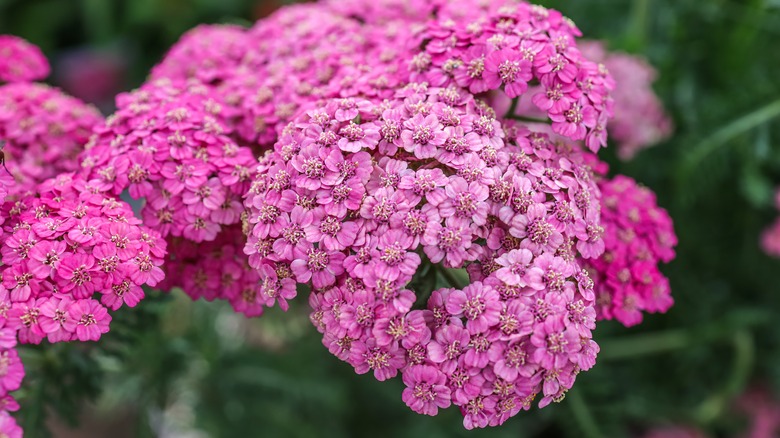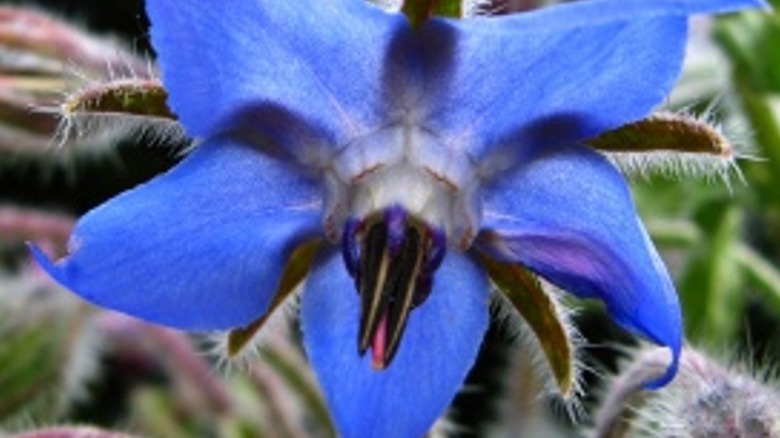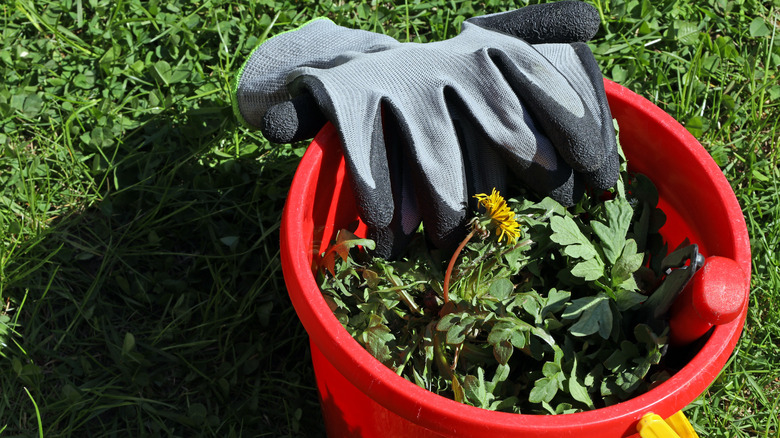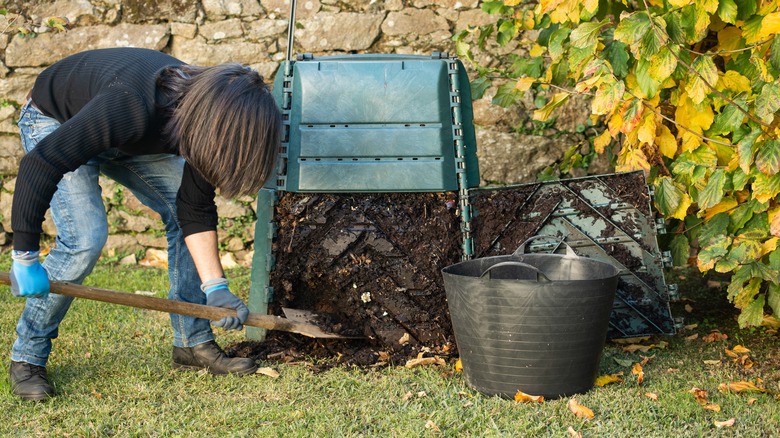The DIY Fertilizer Teas You Can Make To Nourish Your Garden
There are various ways to source natural nutrients to feed your plants. For example, you can make several varieties of fertilizer tea with each one providing different benefits. Dandelions, grass clippings, and even seaweed are all free resources you can use to nourish your plants through the soil or foliar sprays.
The basic process for making fertilizer teas is the same no matter what kind you choose. Simply place your solid source into a container of water, allow it to steep, and then strain it and save the "tea." Always put some type of cover on your steeping container as well to keep out mosquitoes. A screen mesh is best as the steeping process requires oxygen, and a tight lid will limit that. When your steeping bucket is ready, tuck it somewhere out of the way where you won't smell it. Fertilizer teas may feed your roses but the process of making them involves decomposition and smells more like a corpse flower.
The tea-making basics may remain the same, but the ratios of plant matter to water can change, as do steeping times and the dilution rate required when it's time to use your fertilizer. Read each recipe carefully to make sure you have the details down. Keep in mind that tap water from the garden hose contains chlorine and other chemicals. So, when possible, it's best to use water from your own rain barrel.
Dandelion tea
Dandelion is an annoying weed that also happens to be a perfect DIY fertilizer for your garden. To make a fertilizing tea with it, throw the entire plant into a large bucket. Fill the bucket with water, adding about 8 cups of water per pound of dandelions. Then, let your tea steep for two to four weeks. Stir the mixture once a week. When you're ready, strain the mixture and save the liquid "tea." Then, fill a fertilizer or foliar spray with water and add 1 1/2 cups of tea per gallon.
If you want to avoid straining your tea, you can place your dandelions in a cheesecloth or some other type of mesh and then place the mesh bag in the water. This essentially makes a dandelion tea bag that you can simply lift out of the water when you're done making your fertilizer. This trick works for all kinds of weed teas.
Dandelions make great fertilizer in part because they have such long roots. These tap roots reach deep into the soil and draw out nutrients more shallow-rooting pants in your garden can't access. Dandelions are rich in potassium which is particularly useful to fruiting plants. They're also full of vitamin A, vitamin C, magnesium, iron, and calcium.
Comfrey Tea
To make tea from this helpful weed, pull the comfrey plant from the ground or cut it off at the base if you want it to come back. Once harvested, chop the comfrey into smaller pieces for faster steeping. Place the pieces in a bucket of water and put something heavy like a rock on top of them to weigh them down and keep them from floating on top of the water. Cover the mixture with a screen and allow it to steep for four to six weeks. To fertilize your plants, strain and then combine the tea with water at a 1 to 10 ratio.
Like dandelions, comfrey plants root deeply. This makes the weed hard to eradicate but perfect as a fertilizer since it accesses soil nutrients other plants can't reach. It's full of nitrogen, potassium, phosphorus, calcium, magnesium, and vitamins A, B, and C. Comfrey also contains many trace minerals that plants need to thrive.
Grass clipping tea
You don't have to pay to get rid of bagged grass clippings or try to find a place to pile them. Instead, you can make a nourishing grass-clipping tea for your plants. Fill a container one-third of the way with grass clipping, then fill it with water. Cover the container with a cheesecloth or screen to keep out mosquitoes as usual and then allow it to sit for two weeks. Strain the clippings out of the tea and then dilute the concentrated tea with five parts water when watering your plants.
Grass clippings are a fantastic source of nitrogen and they contain potassium and phosphorus. You can use fertilizer made from tea on any number of plants, but it's also a great idea to use it on your lawn. The one caveat is that you must use grass clippings carefully if you use weed removal products on your lawn. The chemicals in some weed and feed products could be bad for your other plants. If you use these products, wait for three mowings to use your grass clippings for fertilizer.
Nettle tea
Stinging nettle got its name for a reason, so wear gloves when pulling it. Once you have it, bruise the leaves by crumpling or bending them and then place them in a large bucket. Fill the bucket only about three-quarters full. Fermenting nettles will create bubbles and you need to leave room for this. Weigh the nettles down so they don't float and then cover the container. Leave the leaves to steep for one to three weeks, stirring every few days. The tea is done when it stops bubbling. Strain it and then dilute it in 10 parts water if you're watering your plants at the soil level or 20 parts water if using it as a foliar spray.
When used for fertilizer, stinging nettle provides nitrogen potassium, iron, zinc, copper, magnesium, and calcium. It's also full of vitamins A, B, C, D, E, and K. It's a natural insect repellent, as well, which may also benefit your plants. This makes nettle tea an excellent and well-rounded fertilizer for many of the plants in your garden, but a few won't appreciate the iron it contains. Tomatoes and roses, for example, don't respond well to high iron levels.
Seaweed tea
If you live near the ocean, seaweed can be a great free fertilizer. To make some, gather some seaweed from the beach and rinse it well to remove the salt. Fill a bucket three-quarters of the way with water and then add seaweed until it's full. If you have to, weigh the seaweed down to stop it from floating. Cover the bucket and then leave it to sit but come back and stir it every few days. Allow the mixture to steep for two to three months and then strain it to gather your tea. You'll want to water your plants with water and tea at a 3 to 1 ratio.
Seaweed is full of trace minerals that can foster plant growth but often aren't found in commercial fertilizers. It's an excellent source of potassium and magnesium but it also contains manganese, zinc, copper, and boron. The exact amount of nutrients in seaweed will vary, however, depending on where it grew and what species it is.
Yarrow tea
To make yarrow tea, harvest the entire yarrow plant before it goes to seed. You can use the stems, flowers, and leaves to make your tea. Place the plants in a large bucket, fill it three-quarters full with water, and weigh the yarrow down if necessary. Cover and allow it to steep for two or three weeks. Then strain and dilute for a tea-to-water ratio of 1 to 10.
Because it is drought-resistant, easy to grow, and sometimes quite colorful, many people enjoy planting yarrow in the garden. Others curse it as a weed thanks to its ability to easily creep and spread into areas where it isn't wanted. Whether you're trying to get rid of the stuff or simply thinning the masses, using yarrow as a fertilizer provides a rich source of phosphates, copper, sulfur, and potassium. Yarrow is so helpful as a fertilizer because it roots deeply and accumulates nutrients quickly.
Borage tea
Turning borage into tea is a great way to get rid of it. Pull up borage plants that you find and dispose of the roots. Strip the stems so you're left with only the leaves and flowers, and place these into a bucket of water. Cover and allow it to steep for about 2 weeks. You can then drain the mixture and fertilize your plants with the liquid. Mix your borage tea with water at a ratio of 1 to 10 when it's time to drench your plants.
Borage is a dynamic accumulator, which means it acquires a lot of nutrients in a short time. This makes it perfect to use as a fertilizer for your other plants. Zinc and potassium are two of its favorite nutrients, so borage tea will be full of both. It also contains a significant amount of nitrogen. It's noteworthy that while some people love its vibrant colors and bee-attracting abilities, borage self-seeds at an incredible rate so certain borage species are considered noxious weeds in some states. Check with your local agricultural extension before planting it for any reason, including to harvest for fertilizer.
Generic weed tea
Although we've mentioned several specific teas, you can make a generic weed tea from whatever you need to get rid of. To do so, follow the same basic formula you would for other weeds: pull your weeds, toss them in a bucket, and fill it with water. Leave some room at the top in case your concoction bubbles and, if your weeds are floating, weigh them down so they're completely in the water. Stir your tea every few days as it steeps and leave it to ferment for two or three weeks. If it bubbles, leave it until the bubbles stop. Strain the tea and dilute it in about ten parts water. You can experiment with the dilution rate if you wish as it may vary depending on the potency of your fertilizer.
The nutrients you get from a general weed tea will vary depending on what weeds you have. There are a few known quantities, however. Lamb's quarters, for instance, will get you quite a few nutrients, including nitrogen, potassium, phosphorous, calcium, and manganese. Sow thistle contains magnesium and potassium while chickweed is good for potassium, phosphorus, and manganese. While some weeds contain more nutrients than others, many have some benefits so experiment with whatever you have.
Compost tea
Fertilizing tea is a great way to get rid of weeds, but you need not limit yourself to just plants. Compost tea is one secret to a thriving garden. To make it, fill a large bucket with water and then make yourself a compost tea bag with a piece of fine mesh or cheesecloth. In your tea bag, place one large handful of compost, one large handful of garden soil, and two handfuls of straw. Add one cup of pulverized fish and one cup of seaweed extract directly to the water. You can find those two at the local garden center if you don't have them on hand.
Place your teabag in the water and let it all steep for about three days. You can then remove your homemade tea bag and fertilize your plants. Do so using a water-to-tea ratio of 1-to-3. If you're using the fertilizer as a foliar spray, use a spray bottle or backpack sprayer to apply it. As is true of weed tea, the nutrient makeup of your compost tea depends on what type of compost you use and what nutrients are in it.
